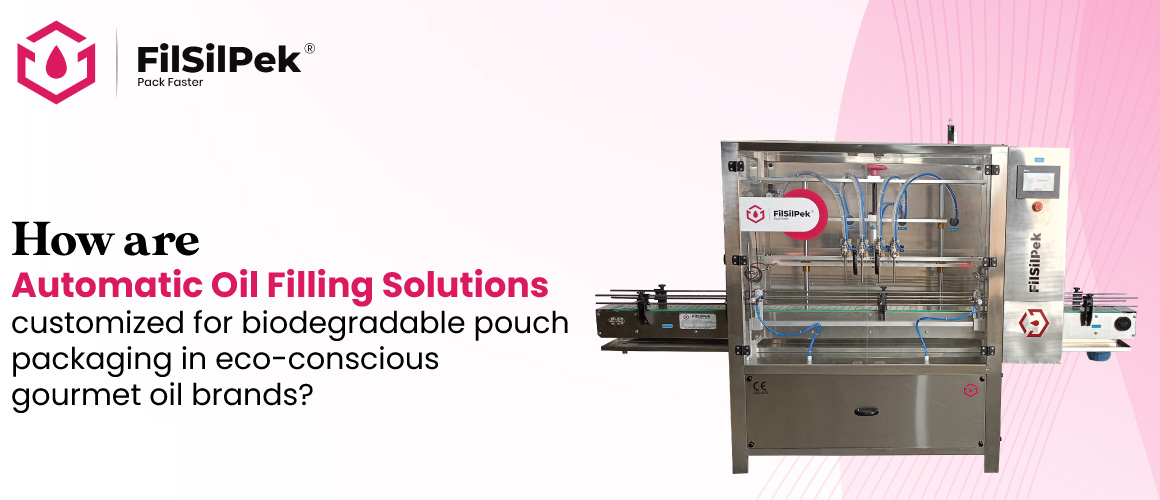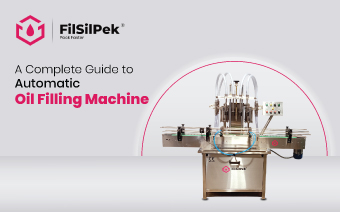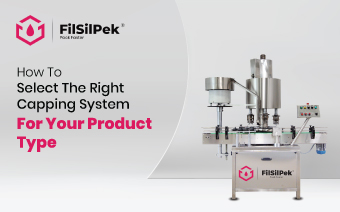How are automatic oil filling solutions customized for biodegradable pouch packaging in eco-conscious gourmet oil brands?
Gourmet oil brands that choose biodegradable pouches face a mix of marketing promise and engineering challenge. Pouches can reduce plastic waste and appeal to eco-conscious buyers, but they introduce constraints: thinner films, different heat-seal behavior, and a wider range of pouch shapes and spout types. Machines must be adapted so the product — often high-value, delicate oil — is handled gently, filled accurately, and sealed reliably without damaging the pouch.
This article explains the mechanical changes, sensors, controls, and process checks that automatic oil filling solutions need for biodegradable pouches. Expect clear, practical guidance for equipment engineers, production managers, and packaging integrators — covering machine elements, oil-handling choices, pouch handling and sealing, quality checks, line integration, and operational best practices. What follows is focused on what works on the shop floor.
What makes biodegradable pouches different for filling?
Biodegradable films and compostable laminates behave differently from standard multilayer plastics. They can be more sensitive to heat, more flexible or stretchier, and sometimes less puncture resistant. That affects how the filling line grips, positions, and seals each pouch, and how much mechanical stress the product can tolerate during handling.
- Thermal properties and sealing window. Compostable films often need lower sealing temperature or longer dwell time. Seal bars and jaws must be adjustable in force, temperature, and dwell, and sometimes supplemented with ultrasonic or impulse sealing solutions to prevent film degradation.
- Mechanical strength and handling limits. Thinner films and softer laminates require gentler pouch conveyors, low-impact transport (soft belts, vacuum holds, or servo-controlled grippers) and careful spout clamping to avoid tears or deformations.
- Variability across suppliers. Biodegradable pouches from different converters may vary in thickness, coatings, and spout types. Production lines must support quick changeovers and include incoming material qualification procedures (sample seal, burst and leak tests).
Key machine components and technologies for pouch oil filling
An automatic line for pouches combines precise fluid metering with gentle mechanical handling. Several filling technologies are commonly adapted for oil and pouch systems, chosen for throughput, accuracy, and product characteristics.
- Dosing modules — piston and servo pumps. Positive-displacement piston fillers or servo-driven piston pumps give repeatable volumetric doses across multiple viscosities. Servo systems make recipe-based changeovers fast and support multi-head synchronization for higher speeds.
- Gear and lobe pumps for continuous flow. For continuous lines with spouted pouches, a gear or lobe pump feeding a flowmeter-controlled manifold can support high throughput while keeping shear low. Flowmeter feedback ensures repeatable fill volumes.
- Flow and mass measurement. Mass flowmeters (Coriolis) or volumetric flowmeters provide closed-loop control of fill volume and compensate for minor viscosity changes or temperature drift, improving fill accuracy without using the disallowed term.
- Gentle fill nozzles. Nozzles with anti-drip valves, vented twin-chamber designs, or low-shear wide-bore tips reduce foaming and oxygen pickup. For spouted pouches use retractable nozzles that engage the spout interior to limit splashing.
- Sanitation and materials of contact. All product-contact parts should be stainless steel (304 or 316) with food-grade seals. Design for easy disassembly and CIP/drainage to meet hygiene needs typical of edible oil lines.
Adapting the filling process for oil characteristics
Oils vary in viscosity, particulate content (herbs or sediments in gourmet blends), and sensitivity to oxygen and heat. The filling strategy must protect product quality while keeping speed and accuracy.
- Temperature control and handling. Maintain oils at stable temperatures to manage viscosity — too cold makes pumping difficult; too warm risks degradation. Install inline heaters or thermal jackets and monitor temperature at the pump inlet.
- Low shear pumping for delicate blends. Use pumps and nozzles designed to minimize turbulence when the oil contains delicate aromatics or suspended herbs. Less shear helps preserve aroma compounds and prevents emulsions.
- Deaeration and inerting. For high-value oils, consider inline deaeration or nitrogen purge ahead of the fill head to reduce oxygen inclusion. If using inerting, control the gas flow and ensure safe venting in line design.
- Particulate management. If the product has visible particulates (e.g., infused herbs), size nozzles accordingly and include strainer housings and process valves that allow backflush without contaminating the product.
Pouch handling, sealing and post-fill quality control
Successful use of biodegradable pouches rests on robust pouch handling and validated sealing. Quality checks must be part of the automated sequence.
- Pouch feeding and orientation. Servo-driven pick-and-place or vacuum-feeder systems orient pre-made pouches reliably. For spout pouches, a vision system verifies spout position before the nozzle enters. Flexible tooling and quick-change grippers speed SKU swaps.
- Spout engagement and nozzle interface. For spouted pouches use alignment guides and soft collets that clamp the spout without overstressing it. Some lines use a short, guided insertion to create an internal seal around the nozzle during fill.
- Sealing methods and tooling. If thermal seals are required, use programmable thermal controllers with closed-loop feedback on bar temperature and force. Ultrasonic sealing can be useful when heat sensitivity is high; impulse sealing works well when dwell time can be longer. Seal tooling should be easy to change for different pouch dimensions.
- Leak detection and integrity testing. Integrate pressure-decay, vacuum, or bubble immersion checks on sample pouches. Inline vision systems can inspect seal appearance, fill level, and spout alignment. Reject handling (diverted reject conveyor) must be fast and logged.
- Post-fill trimming, venting and secondary closure. Some pouches require excess material trimming or a secondary tamper-evident closure. Tools for controlled trimming and a torque-limited capper for spouted closures ensure consistent finish.
Integration, automation and data traceability
Modern lines must connect to higher-level systems for batch control, traceability, and recipe management — especially for premium brands tracking lot and provenance.
- PLC/HMI and recipe control. Use a PLC with recipe storage for quick changeovers: fill volume, pump speeds, nozzle dwell, sealing parameters, and conveyor timings are all stored per SKU. HMI screens should display live KPIs and alarm history.
- Traceability and coding. Integrate inkjet or thermal transfer coders to print batch codes, best-before dates, and supplier information. Link codes to fill parameters and batch logs for recall readiness.
- Line-level quality logging. Store weight checks, leak-test results, and vision inspection outcomes in a historian or MES. This supports audits and continuous improvement.
- Safety and compliance. Implement interlocks, safe access guarding, and food-safety zoning so the line meets local regulatory and customer audit expectations.
Validation, commissioning and regulatory needs
Switching to biodegradable pouches usually triggers a re-qualification of the filling line and validation of process settings to ensure consistent product protection.
- Incoming material qualification. Run a qualification protocol for each pouch SKU: seal window tests, burst tests, and compatibility checks with the chosen sealing method. Record acceptable parameter ranges.
- Performance qualification (PQ). During commissioning perform a PQ run that demonstrates throughput, fill repeatability, seal integrity, and reject rates under production conditions. Capture data for each SKU.
- Sampling and shelf-life checks. Work with the packaging supplier and QA to run shelf-life or accelerated ageing tests that confirm the pouch protects the oil for the target shelf period. Adjust barrier layers or oxygen scavengers if necessary.
- Regulatory and labelling checks. Ensure materials and inks meet food contact regulations in markets of sale. Keep supplier declarations and test reports accessible for audits.
Operational best practices and maintenance for long-term success
Small operational choices make a big difference in uptime and scrap rates when working with more delicate biodegradable materials.
- Establish a pouch handling SOP. Include checks on incoming pouch dimensions, spout fit, and a pre-production sample run. Train operators in gentle handling and quick-change routines.
- Preventive checks for seals and tooling. Create a schedule for checking seal-bar flatness, jaw alignment, and torque settings on cappers. Replace worn silicone or Teflon pads before they affect seal quality.
- Spare-parts strategy. Keep spares for nozzles, seals, sensors, and spare conveyors that are likely to wear. For specialty tooling (spout collets, custom guides) have at least one spare to minimize downtime.
- Continuous improvement loops. Log rejects and root causes. If certain pouch SKUs show higher failure rates, work with the pouch converter to tweak film formulations, sealant layers, or spout design.
Final checklist before production run
- Validate pouch supplier certificates and test samples.
- Run a low-speed commissioning trial with full-weight product to check nozzle engagement and seal quality.
- Confirm recipe parameters for each SKU in the PLC and store them.
- Enable inline weight checks and leak testing and set acceptable tolerance thresholds.
- Train operators on delicate handling and quick changeover steps.
Conclusion
Customizing an automatic oil filling solutions line for biodegradable pouches is a matter of aligning the right mechanical elements, measurement systems, and handling practices to the properties of both the oil and the pouch. With servo-driven dosing, gentle pouch handling, adaptable sealing tech, and thorough testing and logging, gourmet brands can protect product quality while meeting sustainability goals.
If you want, we can convert this into a production checklist or a specification sheet for procurement and OEM quoting.
For more inquiries or detailed discussion on the line design and quotes write us now at [email protected]
A Complete Guide to Automatic oil filling machines
Oil packaging has changed a lot over the last decade. What once depended heavily on manual labor…..
How to Select the Right Capping System for Your Product Type
Picking the right capping system has a direct impact on how smoothly your packaging line runs…..
How Does Accurate Filling Increase Profit in Chemical Manufacturing
Chemical manufacturing runs on formulas, measurements,…..



